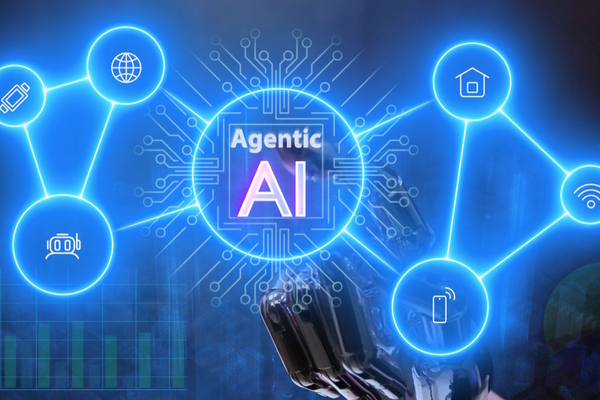Building resilient leadership

Dr Serkan Ceylan at Arden University explores the importance of building resilient leadership in a changing business landscape
The business world is in a perpetual state of evolution. Technological advancements, shifting consumer behaviours and unforeseen global events are reshaping industries at an unprecedented pace. For today’s leaders, resilience is no longer optional; it’s essential. In fact, companies prioritising leadership resilience see 6.8% higher revenue growth.
The ability not only to withstand disruption, but to thrive within it, is what separates successful businesses from those that falter. However, resilience in this context isn’t about unyielding rigidity. Rather, it’s about adaptability, innovation and an inherent ability to act boldly while maintaining a clear long-term vision.
Successful leaders understand that disruption is neither good nor bad. It’s simply reality. To chart a course through this complex and unpredictable environment, organisations must develop a leadership approach characterised by flexibility and forward-thinking strategies.
I have extensively explored the concept of resilient leadership and its key pillars. In this article, I examine four core strategies that empower leaders to build resilience in their organisations.
Strategic agility
At the heart of resilience lies the ability to pivot quickly in response to change. Strategic agility is this adaptability in action. Whether faced with volatile markets, sudden regulatory shifts or competitive pressures, resilient leaders approach challenges with clarity and confidence. Organisational leaders now average nine major changes per year, compared to just two before 2020.
But this doesn’t come without a caveat: 38% of executives would rather quit than lead another change initiative; it’s safe to say that change has been moving at a rapid pace that many are struggling with.
How do businesses manage this? By creating a culture of continuous learning and reassessing their strategies often. Regular evaluation allows organisations to adapt to emerging trends and technologies that could disrupt or advance their industries. Flexibility also requires data-driven decision-making. Reliable, actionable insights empower leaders to act decisively, weighing risks and opportunities with precision.
Companies like Netflix have long demonstrated the power of agility. By shifting from a DVD rental service to a streaming giant and later becoming a major player in content creation, Netflix’s leadership exemplifies how bold, data-informed moves can build resilient organisations that thrive in volatility.
People-centric leadership
Resilient organisations are built on the foundation of motivated, engaged and empowered people. Leadership isn’t just about navigating markets; it’s also about fostering a culture that values emotional intelligence, empathy and collaboration. In fact, during intense change, employees who strongly trust leadership are 4.5 times more engaged and 62% less burned out; effective communication yields 4.3 times higher engagement and 65% less burnout.
People-centric leaders ensure their teams are equipped with the tools and support they need to succeed. They focus on building strong organisational cultures where feedback, transparency and trust are valued. When employees feel included and supported, they exhibit greater resilience, creativity and commitment. As an example, leaders can build trust through informal conversations and internal communication forums – avenues that essentially allow employees to feel heard.
A report by PwC in 2023 found that thriving in permacrisis requires an executive leader and upskilled teams. It stated: “A successful resilience strategy and programme needs 1) executive sponsorship from the C-suite, 2) a programme leader with clear responsibility, and 3) a skilled team to do the day-to-day work.”
To do this, developing emotional intelligence is especially critical. Resilient leaders listen actively to their teams and align their decisions with both organisational goals and the needs of their employees. This people-first approach drives higher levels of trust and adaptability across the organisation, even in times of change.
Technology as an enabler
Digital transformation is no longer a distant dream; it’s a competitive necessity for every organisation. The integration of AI, automation and advanced analytics provides businesses with the tools to adapt quickly and stay ahead of shifting markets.
AI and automation allow organisations to optimise workflows, improve customer experiences and free up human talent for creative and high-value tasks. Meanwhile, data-driven insights enable leadership to act quickly and strategically. By leveraging advanced technologies, resilient organisations not only stay competitive, but also proactively shape future trends.
Consider how companies that embraced remote working technologies during the early days of the global pandemic adapted faster to the challenges of lockdowns. These organisations not only sustained productivity but also positioned themselves as forward-thinking employers for the talent of the future.
Balancing adaptability and vision
Finally, resilience requires finding a balance between short-term adaptability and long-term sustainable growth. Leaders must take bold steps to adjust to immediate challenges, while ensuring these decisions align with their company’s overarching mission and vision.
A key part is investing in learning. Only 16% of global employers invest in adaptability or continuous learning programmes, despite 26% of employees naming adaptability as a top skill needed. This becomes more concerning when we consider that to be resilient and adaptable, leaders and employees need a mix of skills, which need to be taught.
Being resilient and adaptable requires good judgement, foresight and an ability to prioritise. Leaders should avoid getting caught in reactionary decision-making that sacrifices their long-term goals. Instead, they should pursue sustainable growth strategies that allow flexibility, without compromising the organisation’s core values.
A great example is Patagonia, a global outdoor clothing brand. Patagonia’s leadership has consistently balanced innovation and adaptability with its long-term focus on environmental responsibility. This approach has not only ensured the company’s profitability, but it has also strengthened its loyal customer base by staying true to its values.
Resilience in business leadership is about having the agility to act decisively, the emotional intelligence to inspire teams, the foresight to balance immediate and future needs, and the technological tools to stay ahead.
Leaders who commit to these strategies equip their organisations to thrive in an unpredictable and evolving business landscape. In the age of disruption, resilience is not just your company’s survival tactic but its competitive advantage.
Dr. Serkan Ceylan is Dean of the Faculty of Business and Innovation at Arden University
Main image courtesy of iStockPhoto.com and wildpixel

Business Reporter Team
You may also like
Most Viewed
Winston House, 3rd Floor, Units 306-309, 2-4 Dollis Park, London, N3 1HF
23-29 Hendon Lane, London, N3 1RT
020 8349 4363
© 2025, Lyonsdown Limited. Business Reporter® is a registered trademark of Lyonsdown Ltd. VAT registration number: 830519543





